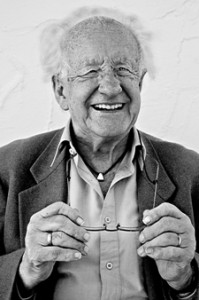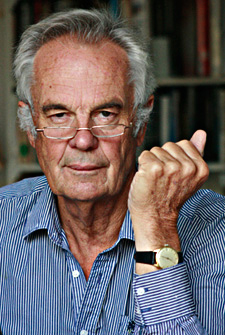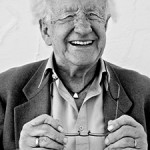Posts Tagged ‘China’
TFF PressInfo # 406: Peace between China and Japan (and the three Chinese revolutions)
By Johan Galtung
February 27, 2017
Keynote: New Vision of Peace in East Asia – Sino-Japanese Peace Dialogue
Nanjing, 22-23 Feb 2017
As Buddhist philosophy teaches, peace, like violence and conflict, is a relation; not an attribute of China or Japan. As Daoist philosophy teaches, in a holon like East Asia there are forces and counterforces, yin/yang, with yin and yang in both.
Negative peace would relate the two without violence or threats; positive peace would relate them with good things flowing. Reality?
Past: The “Nanjing massacre”.
Present: Threats between China and USA-Japan “collective self-defense” also for Senkaku-Diaoyu, de facto US occupation of Japan. Future: no vision beyond balance of threats.
Hence, peace between China and Japan has to be created: visions of peaceful futures, solving present conflicts, conciling past trauma.
Peace does not flow from the past. But peace may flow from the future.
Geographically the two countries are close, yet very different.
Japan, ethnically homogeneous, had 125 Emperors since -659(?), succeeding by blood lineage. The Emperor was spiritual, praying for peace and welfare of people and country. But since Meiji 1868, Taisho and Showa up to the 1945 defeat Emperors, modeled on European Kings, were military commanders-in-chief in uniform. Then back to the old; the present Heisei era standing for creating peace within and without.
Japanese military used to be high up in terms of social status.
China, ethnically very diverse, has had a number of dynasties, some short, some long, with usually very bloody successions. The Chin dynasty from -221 unified. Han became a powerful source of identity, also in what after the last Ching dynasty 1644-1910 was called China.
Chinese military used to be low down, run by warlords known for cruel massive killing, sexual violence and looting.
Like in Japan, (Nara-Kyoto-Tokyo) the capital changed (–Xi’an-Nanjing-Beijing); unlike Japan, China as a state in the state system is only a century old, from 1911; more similar to Europe in history than to states in Europe.
Future: Can countries with conflict (incompatible goals) and trauma (wounds from past violence) live together?
Potentially yes, e.g. in a Read the rest of this entry »
Trump’s phone call to Taiwan
By Jonathan Power
December 13th 2016.
President-elect Donald Trump has decided to poke China in the eye. He has phoned the president of Taiwan, Tsai Ing-wen, assuring her of America’s support. Yes, the US has always supported Taiwan but usually behind the scenes, apart from its arms supplies. It does not recognize it diplomatically. China was angry.
After Sunday’s news that Trump was reconsidering the US’s long-held “One China” policy Beijing is furious.
When, last November, President Xi Jinping met Ma Ying-jeou, then Taiwan’s president and leader of the Kuomintang Party, I observed that if China continues to play its hand quietly it can, if it is shrewd, in the end win re-unification. But perhaps it will be over Trump’s dead body.
The leaders of the two parties, the communists and the Kuomintang, the Republican claimants for power in China, hadn’t met since 1945 during aborted peace negotiations. A while later the Kuomintang, facing defeat from Mao Zedong’s communist army, fled the mainland to Taiwan.
Beijing has over a thousand rockets aimed at Taiwan. The US supplies arms aplenty to Taiwan – some of which need American cooperation and participation to be fired. Despite that China is capable of overwhelming the island’s defences. Read the rest of this entry »
Gandhi and Mao – two Asians
By Johan Galtung
Let us start by summarizing. We are looking at six major leaders of forces and movements shaping centuries – Churchill-Hitler-Stalin-Mao-Gandhi-Mandela – comparing, two at a time. We are looking for similarities and dissimilarities. Some of them are out in the open, in their spoken ideologies. But most of them – maybe the most interesting–are hidden to the untrained eye. There are the similarities when they are from the same civilization and the dissimilarities when different – however much they profess to be on the same or very different lines. The six were themselves hardly aware of this factor.
As Churchill, Hitler and Stalin share the Christian-secular civilization; we would expect anti-Semitism, racism, and little hesitation when killing–by war, starvation (the Lord also did it), by revolution, millions – even with enthusiasm. Deeper down there are deductive reasonings from axioms about race and class and a final state: the British Empire, the Aryan Reich, for one thousand years, and socialism on the way to the final stage, communism forever; run from London, Berlin, Moscow. So we got the triangular Second World War with Moscow entering two alliances of convenience.
Enters Mao. He shares the word “communist” with Stalin (they still use it, long after it disappeared in USSR-Russia). But the Chinese civilization leaves its indelible imprint on that concept, giving the word a very different meaning, commune-ism, common-ism, doing things together, cooperating.
Enters Gandhi. An Asian like Mao, but watch out: there is no Asian civilization. There are West, Central, South–Hindu; Gandhi is here!–Southeast, East–Mao is here!–Asia; all very different–and a sixth, North Asia, Russian Orthodox. Read the rest of this entry »


